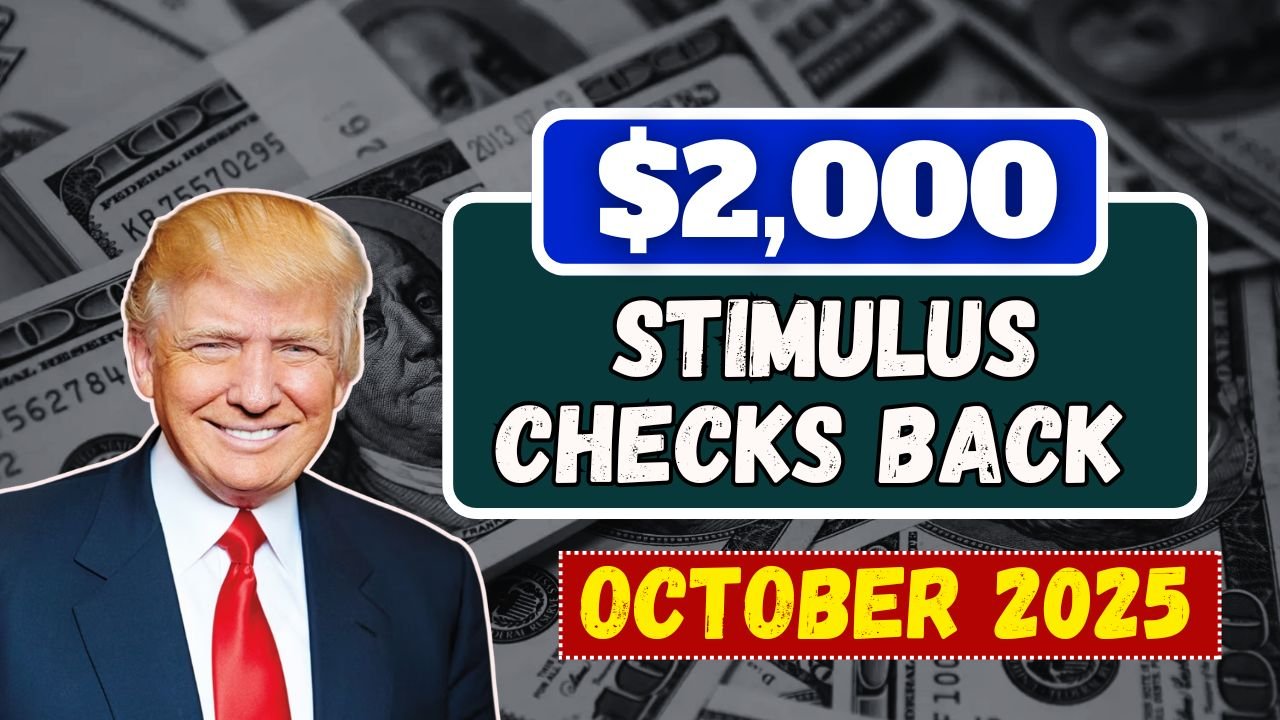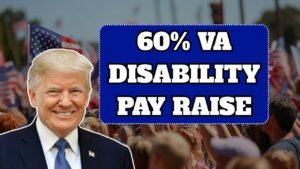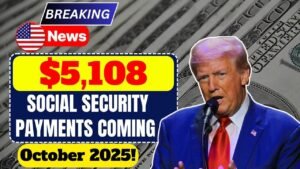Former US President Donald Trump has once again heated up the economic debate. In a TV interview dated October 3, 2025, Trump announced that he proposes sending new “stimulus checks” ranging from $1,000 to $2,000 to American citizens. This time, the funds will be paid not from traditional government borrowing or lending, but from tariff revenue. He says this amount will be “a kind of dividend,” a portion of the revenue earned from US trade policy returned to citizens.
This idea comes at a time when legal disputes over tariff policies in the US are ongoing and the national debt is steadily rising. At the same time, this move is also considered highly politically strategic in light of the upcoming midterm elections.
Trump’s Plan: “Pay Off Debt with Tariffs and Return Profits to Citizens”
In his interview, Trump clarified that a portion of the tariff revenue will first be used to pay off the national debt. The remaining amount will be distributed among citizens. He said,
“We’re paying off the debt because the people have allowed it to grow so much. After that, we can give the American people a kind of dividend—a return to them from our nation’s wealth.”
According to Trump, this amount of $1,000 to $2,000 will help American families relieve the rising prices caused by tariffs. While the idea is similar to the stimulus checks given during the COVID-19 pandemic, its funding process is completely different.
Tariff-Based Stimulus: A New Economic Experiment
Trump’s initiative is consistent with legislative plans like the “American Worker Rebate Act.” Under this legislation, Senator Josh Hawley suggested that a portion of the tariff revenue be distributed directly to American citizens. Hawley supported Trump’s idea, saying,
“This is a way to return to American workers the benefits that are flowing back into the country from Trump’s tariff policy.”
This idea is economically novel and politically attractive because it represents “relief from domestic earnings,” not “relief from borrowing.”
Previous rounds of stimulus checks: The role of both Trump and Biden
During the COVID-19 pandemic, the US government issued three rounds of stimulus checks—two under the Trump administration and one under the Biden administration. Those payments were funded by government borrowing, whereas the proposed plan will not involve any borrowing.
In early 2025, Trump also proposed checks of up to $5,000, to be funded by cuts in government spending. Although that plan failed to move forward, this tariff-based model has now brought him back into the political spotlight.
Funding Question: Will Tariffs Bring in So Much Money?
The biggest question surrounding the plan is this: can such a large sum be raised through tariffs?
Trump claims that tariffs could generate “over a trillion dollars annually.” However, according to government reports, only about $215 billion has been collected since April 2025.
If all American adults were to receive $1,000 to $2,000, the total cost would range from approximately $330 billion to $660 billion. This means that covering this amount entirely through tariffs seems impossible at present.
Furthermore, implementing this proposal would require congressional approval, which is not easy in the current political climate. Numerous legal petitions are already challenging Trump’s tariff structure. If the courts rule these tariffs unconstitutional, the entire plan could collapse.
Pros and Cons: Who Wins, Who Loses?
This proposal is drawing support and opposition from both sides.
Some families, especially retirees and low-income families, are welcoming this financial aid. But economists warn that if hundreds of billions of dollars are injected back into the market, inflation could flare up again—as it did after the pandemic, rising to 7% to 9%.
Critics point out that the tariffs have already added approximately $3,800 of additional expenses to each American family annually. Therefore, even a $2,000 check would not provide real relief to families.
Politically, Republican leaders are calling it a “worker-friendly initiative,” while Democrats are calling it a “hidden tax.” Reactions to the measure are mixed on social media—some say, “If Trump gives away $2,000 from tariffs, he’ll be the most popular president ever,” while others write, “What good is $2,000 when $3,800 is going out of pocket from tariffs?”
Treasury Department’s View: The Time Is Not Yet
US Treasury Secretary Scott Bessant has stated on several occasions that the current priority should be to use tariff revenue to reduce the national debt and deficit. In interviews in August and September 2025, he indicated that if sufficient revenue is generated from tariffs, it could be distributed in the future as a “refund to the public.”
However, he also stated that “it would be premature to issue checks immediately.” According to him, ensuring stable revenues first and then providing relief based on that would be more sustainable.
Can this plan actually be implemented?
Economically, this plan is a win-win.While this proposal sounds attractive, it is also complex.
Tariff revenue is volatile, and a significant portion of it already depends on trade agreements, judicial challenges, and global economic fluctuations.
Politically, such announcements can be a means of public engagement before midterm elections. But without congressional approval and judicial validation, they may remain merely a proposal.
Conclusion: A “Dividend” Dream or Electoral Strategy?
Donald Trump’s “Tariff Dividend” proposal is a unique idea, combining both economic policy and political messaging. It seeks to reassure American citizens that “the nation’s wealth belongs to the nation.”
At present, neither a clear legislative framework nor specific revenue sources have been established for the plan. But what is certain is that Trump has once again brought the economic debate to a new level. It will be interesting to see in the coming months whether this “$2,000 dream” becomes a reality or remains merely an electoral strategy.
In Brief:
- Proposal: $1,000–$2,000 stimulus checks, funded by tariff revenue.
- Objective: Reduce the national debt and provide economic relief to citizens.
- Challenges: Insufficient revenue, legal disputes, Congressional approval required.
- Potential Impact: Risk of inflation, but also potential for public support.
FAQs
Q1. What is Trump’s proposed stimulus check amount?
Trump has proposed sending $1,000 to $2,000 per person using tariff revenues.
Q2. How will the stimulus checks be funded?
The payments are planned to be funded from tariff income, not federal borrowing.
Q3. Who will receive these new stimulus checks?
Eligible U.S. citizens, similar to previous stimulus payments, would be the recipients.
Q4. Are there any risks or challenges to this proposal?
Yes, challenges include limited tariff revenue, ongoing legal disputes, and the need for congressional approval.
Q5. Could these checks impact inflation?
Economists warn that injecting hundreds of billions into the economy could reignite inflation, similar to pandemic-era stimulus effects.


